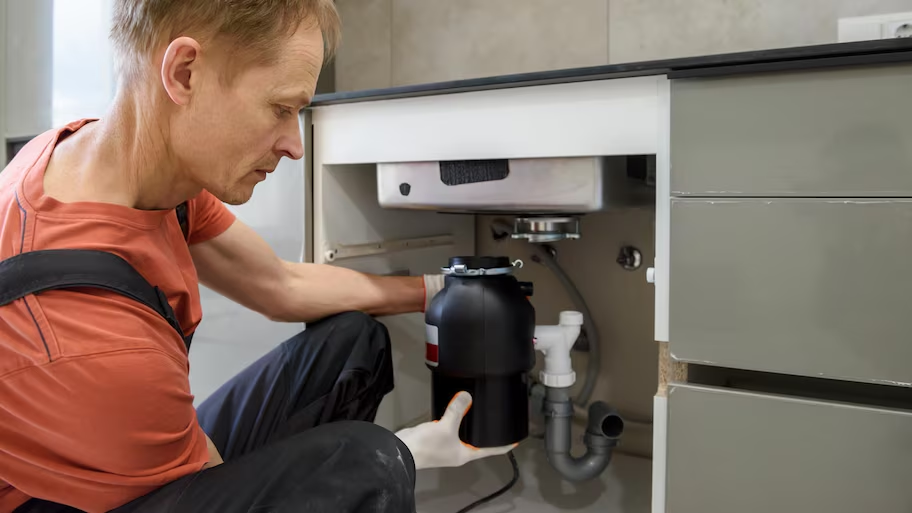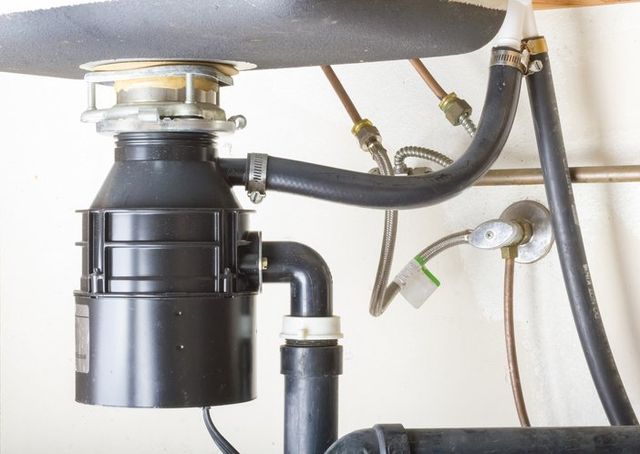The Guide to Resolving a Leak in Your Garbage Disposal
The Guide to Resolving a Leak in Your Garbage Disposal
Blog Article
Were you hunting for advice Why Is ?

Waste disposal unit are essential kitchen home appliances that assist in disposing of food waste effectively. However, a leaking garbage disposal can be a frustrating and messy trouble to manage. Luckily, many leakages can be taken care of easily with a couple of easy actions. In this short article, we will review exactly how to deal with a dripping waste disposal unit efficiently.
Intro
Garbage disposals are set up under cooking area sinks and are developed to shred food waste right into smaller sized pieces, enabling it to travel through the pipes system easily. While these gadgets are normally reliable, leaks can happen over time due to deterioration, loosened connections, or damage to the system.
Common Reasons For Leaks in Waste Disposals
Worn Seals and Gaskets
Seals and gaskets play a crucial duty in protecting against water from dripping out of the waste disposal unit. With time, these components can weaken, resulting in leaks around the disposal unit.
Loose Links
The connections between the waste disposal unit and the plumbing system can become loosened gradually, causing water to leakage out throughout operation.
Splits or Holes in the Disposal Device
Physical damage to the waste disposal unit, such as fractures or holes in the real estate, can also lead to leaks.
Determining the Source of the Leakage
Before attempting to take care of a leaking waste disposal unit, it is necessary to recognize the source of the leakage. This can generally be done with aesthetic inspection or by carrying out simple tests.
Visual Evaluation
Check the garbage disposal unit meticulously for any signs of water leak. Pay attention to locations around seals, gaskets, and link factors.
Checking for Leaks
One way to check for leakages is by running water via the disposal system and checking for any kind of noticeable signs of leak.
Devices and Products Needed for Taking Care Of a Leaking Waste Disposal Unit
Prior to beginning the repair procedure, gather the essential devices and materials, consisting of a screwdriver, flexible wrench, plumbing's putty, substitute seals or gaskets, and epoxy or patching material for fixing fractures or holes.
Step-by-Step Guide to Repairing a Leaking Garbage Disposal
Switch off the Power
Before trying any fixings, guarantee that the power to the waste disposal unit device is turned off to avoid the threat of electric shock.
Find the Leak
Recognize the exact place of the leakage and establish the reason.
Tighten up Links
Make use of a wrench to tighten any kind of loosened links in between the disposal device and the pipes system.
Change Seals or Gaskets
If the leakage is because of worn seals or gaskets, eliminate the old elements and replace them with brand-new ones.
Patching Splits or Holes
For cracks or holes in the disposal device, usage epoxy or an appropriate patching material to secure the broken area.
Examining the Waste Disposal Unit After Fixing
As soon as the repair is complete, evaluate the waste disposal unit by running water with it to guarantee that the leak has been solved.
Preventive Upkeep Tips to Prevent Future Leakages
To avoid future leaks, it is important to do routine maintenance on your garbage disposal. This includes maintaining it clean, preventing putting non-food products or difficult objects down the disposal, and regularly looking for leaks or other problems.
Final thought
Finally, taking care of a dripping waste disposal unit is a fairly straightforward process that can be completed with fundamental tools and materials. By complying with the steps described in this short article and practicing preventive upkeep, you can maintain your waste disposal unit in good working condition and avoid costly fixings in the future.
HERE’S HOW TO FIX YOUR GARBAGE DISPOSAL
WHAT TO DO IF SOMETHING IS STUCK IN YOUR GARBAGE DISPOSAL
If the impeller won’t turn, there’s probably something stuck in the disposal. It could be a steak bone or peach pit, although plumbers report pulling all sorts of inappropriate objects out of disposals, such as bottle caps or aluminum foil. Make sure power to the disposal is off, and look inside to see if you can see the source of the jam.
Never stick your fingers in a disposal. Pull out anything you see with tongs or pliers.
If the disposal still won’t work, it may be time to call a plumber or consider buying a new disposal. GEM Plumbing & Heating is here for all of your garbage disposal needs.
WHAT TO DO IF YOUR GARBAGE DISPOSAL DRAIN IS CLOGGED
Take everything out from underneath your sink and put a bucket or other container under your disposal to catch any water that drains out. Disconnect your disposal from the power supply. If it’s plugged into a wall outlet, unplug it. If it’s hardwired into an electrical box, go to the electrical panel and turn off the breaker for the disposal. Pour ¼ cup of baking soda into the drain, followed by ½ cup of white vinegar. Give the solution a few minutes to fizz and do its work. Look into the disposal with a flashlight to see if you can see an object that might be causing the clog. If you see it, remove it using tongs or pliers. MORE TIPS ON DEALING WITH A CLOGGED GARBAGE DISPOSAL
Never use drain cleaner in a garbage disposal. It can damage the plastic parts inside the disposal. You can also be splashed with the caustic liquid while working to clear the clog. Beware! Never stick your fingers into a garbage disposal. Trust us — not a good idea. In many instances, your dishwasher drains through your garbage disposal. This allows the disposal to grind any large food particles that may be drained out of your dishwasher. There are some jurisdictions, however, where the plumbing code prohibits such a connection. WHAT TO DO WHEN YOUR DISHWASHER DRAINS THROUGH THE DISPOSAL
Run some water in the sink so your plunger has at least a ½-inch of water to create a seal and plunge vigorously up and down several times. You may need to repeat this several times. Run hot water down the drain to clear any residue that remains.

Do you like more info about Why Is ? Post a comment directly below. We'd be pleased to find out your insights about this entry. In hopes to see you back again later on. Do you know another individual who is sincerely interested in the topic? Do not hesitate to promote it. Many thanks for your time. Please check up our website back soon.
Learn More Report this page